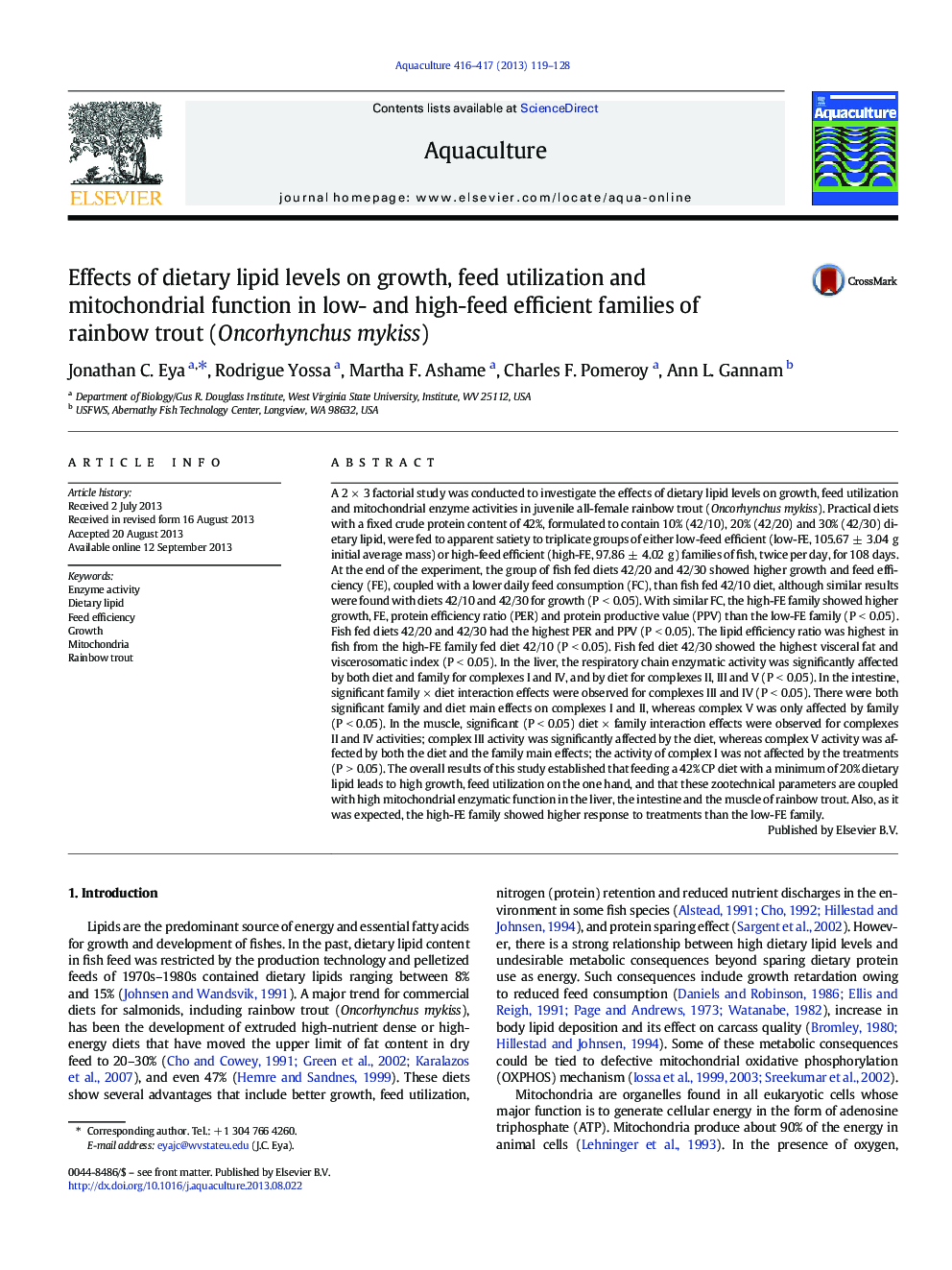| Article ID | Journal | Published Year | Pages | File Type |
|---|---|---|---|---|
| 2422037 | Aquaculture | 2013 | 10 Pages |
•Higher growth and feed efficiency were coupled with a lower daily feed consumption.•There was a positive correlation between dietary lipid level and fish body lipid.•The dietary lipid levels and the family affected the activities of complexes I–V.•A minimum of 20% dietary lipid produces high growth and feed utilization.•These zootechnical parameters are coupled with high mitochondrial enzymatic function.
A 2 × 3 factorial study was conducted to investigate the effects of dietary lipid levels on growth, feed utilization and mitochondrial enzyme activities in juvenile all-female rainbow trout (Oncorhynchus mykiss). Practical diets with a fixed crude protein content of 42%, formulated to contain 10% (42/10), 20% (42/20) and 30% (42/30) dietary lipid, were fed to apparent satiety to triplicate groups of either low-feed efficient (low-FE, 105.67 ± 3.04 g initial average mass) or high-feed efficient (high-FE, 97.86 ± 4.02 g) families of fish, twice per day, for 108 days. At the end of the experiment, the group of fish fed diets 42/20 and 42/30 showed higher growth and feed efficiency (FE), coupled with a lower daily feed consumption (FC), than fish fed 42/10 diet, although similar results were found with diets 42/10 and 42/30 for growth (P < 0.05). With similar FC, the high-FE family showed higher growth, FE, protein efficiency ratio (PER) and protein productive value (PPV) than the low-FE family (P < 0.05). Fish fed diets 42/20 and 42/30 had the highest PER and PPV (P < 0.05). The lipid efficiency ratio was highest in fish from the high-FE family fed diet 42/10 (P < 0.05). Fish fed diet 42/30 showed the highest visceral fat and viscerosomatic index (P < 0.05). In the liver, the respiratory chain enzymatic activity was significantly affected by both diet and family for complexes I and IV, and by diet for complexes II, III and V (P < 0.05). In the intestine, significant family × diet interaction effects were observed for complexes III and IV (P < 0.05). There were both significant family and diet main effects on complexes I and II, whereas complex V was only affected by family (P < 0.05). In the muscle, significant (P < 0.05) diet × family interaction effects were observed for complexes II and IV activities; complex III activity was significantly affected by the diet, whereas complex V activity was affected by both the diet and the family main effects; the activity of complex I was not affected by the treatments (P > 0.05). The overall results of this study established that feeding a 42% CP diet with a minimum of 20% dietary lipid leads to high growth, feed utilization on the one hand, and that these zootechnical parameters are coupled with high mitochondrial enzymatic function in the liver, the intestine and the muscle of rainbow trout. Also, as it was expected, the high-FE family showed higher response to treatments than the low-FE family.
